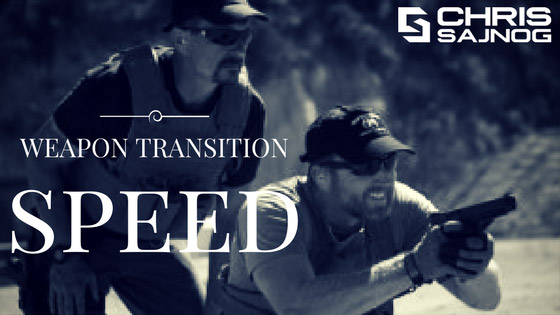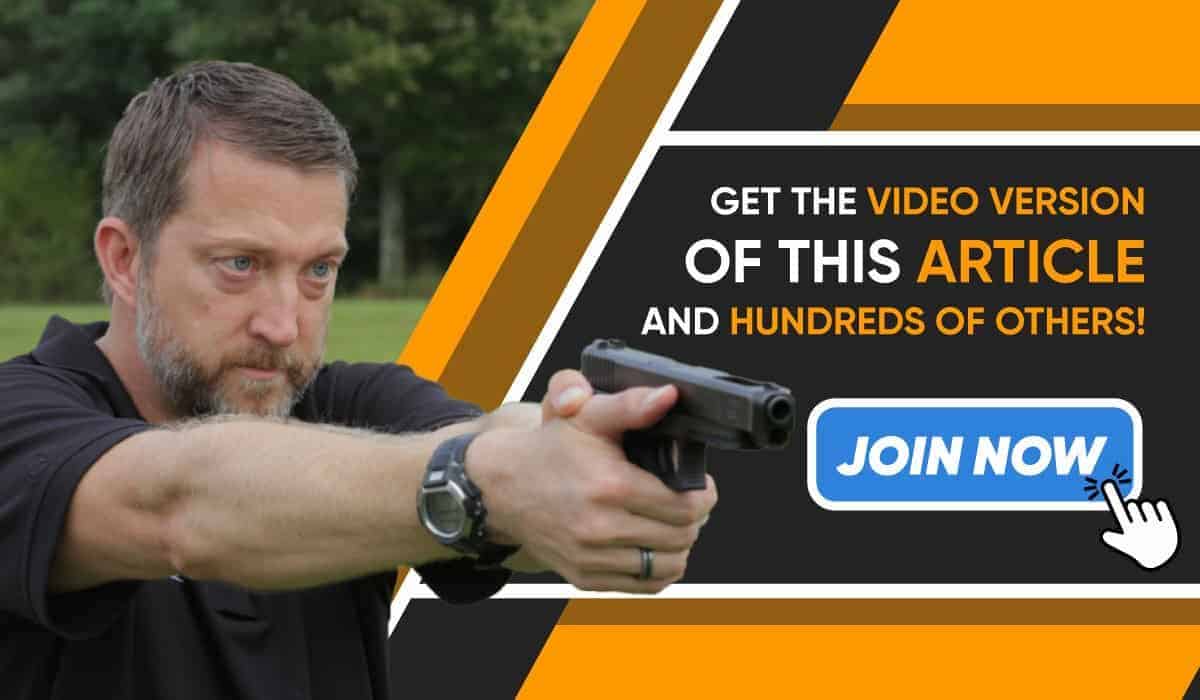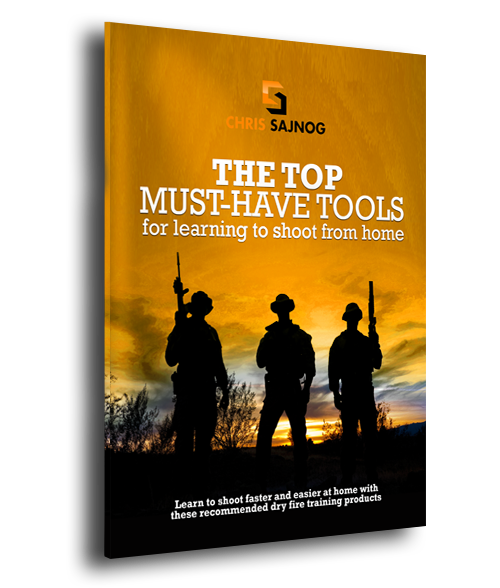Weapon Transition Training: The Evolution of Law Enforcement Training
Having trained law enforcement units for nearly 20 years, my training philosophy is more than just “training.” It’s also about maintaining and advancing your perishable skills. Perishable skills are those skills that depreciate in effectiveness over time if they are not practiced. Basically, anything you do that requires hands-on activity is a perishable skill. This means that if you don’t consistently train and keep that skill frosty, it’s going to collect dust and eventually not work the way it’s supposed to when needed. Weapon transition training will save your life. If you don’t practice it often, you won’t be very good at it; if you’re not good at it, it could cost you your life.
One of your main duties in LE is physical interaction, so this means that almost everything you do while you’re on the job is a perishable skill. Even your verbal skills are perishable. Think back to the day when you started your Law Enforcement training, whether it be in an academy or in the military, and you started learning how to use and apply verbal commands and consequences (C&C) (typically Level II on many agencies’ UOF Continuum). But think of when you were doing C&C drills for the first time. It just wasn’t natural and it took you many repetitions and training to start getting comfortable and learning different ways to deescalate situations with some simple C&C.
I know you learned that voice inflection could even escalate or deescalate a situation too! And when you hit the streets, it’s all about repetition. When you deal with subject after subject and situation after situation, it becomes natural, but you have to keep doing it to stay on point with your skills and most importantly progress those skills.
Now on to the specific point of my rambling — the highly perishable skill of weapon transition training. When most people talk about weapons transitions, us operators revert to talking about transitioning from our primary weapon (CQC rifle) to our secondary weapon (sidearm) because our rifle malfunctioned or ran out of ammo. In the middle of an engagement, getting another weapon up and in the fight is faster than reloading. For me transitioning is more about buying myself time to take cover and get my primary weapon back in the fight. Operators know the importance of running these “standard” transition drills often — every time you hit the flat range, run through CQC, or train at the shoot house.
But what about those officers who typically rely upon their sidearm as their primary weapon? A patrol officer will have a tactical shotgun or M4/M16 rifle locked in the rack in their car, and it usually isn’t within reach during the deadliest situation an officer faces every day — the vehicle stop or interaction with a subject on the street when you may be away from cover, concealment, and long guns in your car. So aside from an operator who always practices transition drills, which a patrol officer should do as well (transition from a rifle to a sidearm), I’m focusing on the “other” transition situations.
In the middle of an engagement, getting another weapon up and in the fight is faster than reloading.
Every officer practices the empty hands “interview stance” transition to a weapon. I teach this all the time at the range. So, have you seen anyone practice transitioning to his or her sidearm from let’s say a stance where they’re already in a battle or ready stance with their expandable baton or PR24 deployed? When most officers train with batons, once they’re done beating the heavy bag, target bag, or the poor teammate in the RedMan or Hitman suit, they relax their posture and nonchalantly collapse the baton and return it to its carrier.
Remember which hand you hold your baton, pepper spray, Taser, or handcuffs in…that’s right, your weapon’s hand. The very hand that you’re relying on to access your firearm when you’re in the fight of your life. If you have some other weapon or tool in your firing hand and you need to access your sidearm, you need to simply ditch the baton, cuffs, etc., and get your gun in the fight to stop the threat. It sounds simple but we as human beings work on muscle memory and repetition. So, you train with your baton, spray, or cuffs, and when you complete the task you put it away slowly, taking your time; and time is precious in a firefight. Shaving tenths of a second off your transition time will save your life.
Under duress, your body will revert back to how you train without you even thinking about it, and this means that if you’re holding a baton and now you need to get to your firearm, your brain and body will take time to process this new, untrained task causing a delay in the time it takes you to access your sidearm. Bad guys practice how they are going to attack officers, and most bad guys know that police officer are highly trained and more proficient than them. This is why bad guys look for advantages and will train to use your tactics, techniques, and procedures against you.
Some even know and wait until you have something else in your hand before deploying their attack. Sodo some dry weapons training in your fighting stance with one of your tools in your hand, and work through drills where you just drop the tool or weapon and transition to your firearm. Trust me it feels awesome to learn a new skill that will save your life. It’s such an easy drill to do. You do dry-fire. Right?
Now, many police officers have a backup weapon, let’s say an ankle rig with a sub-compact pistol. Most officers who do this won’t run through transition drills from their sidearm to their backup weapon. Running this drill for the first time when you’re in a firefight and your sidearm goes down is bad. If you have a backup weapon, which I’m a firm believer that all officers should have, treat your sidearm as your “primary” and your back-up as your “secondary.” Work through dry fire drills where you “shoot” your gun dry or your sidearm malfunctions and practice transitioning to your backup pistol.
Do these drills from the interview stance, kneeling, on your back, and any other position you can fathom yourself shooting from. It’s another new skill that will save your life or the life of a fellow officer or innocent civilian. Again, it’s always a good idea to learn new skills with dry-fire training, and they can be reinforced during those times you can’t make it to a range.
Remember that with any transition, whether it’s from rifle to pistol, pistol to pistol, baton to the pistol, or interview stance to pistol, it’s all about cutting time off the transition and getting another weapon in the fight. Weapon transition training are for learning to buy time to get your primary weapon in the fight. Even if you eliminate the threat with your secondary weapon, you need to get your primary back in the fight.
You should always be ready. Learning, training, and advancing new skills are highly contagious and critical to advancing your skill sets. Don’t get stuck in the training rut of doing the same quarterly, semi-annual, and annual training regimen. Add non-standard transitions to your training plan and remember that all your skills, especially when dealing with firearms, are perishable.
Don’t train to maintain, train to evolve!






